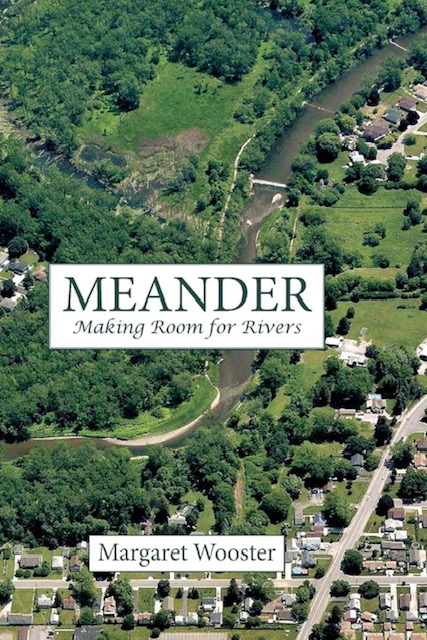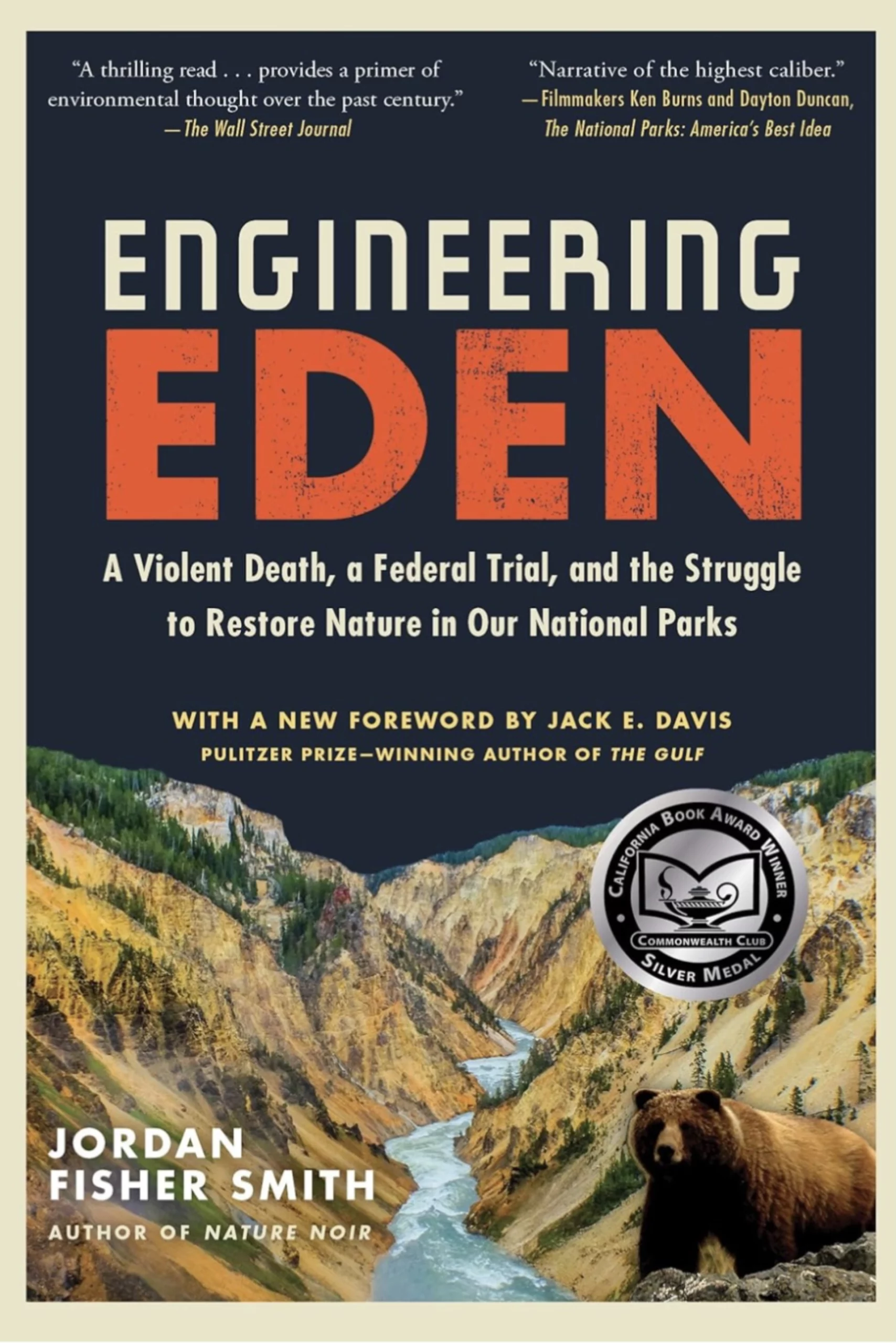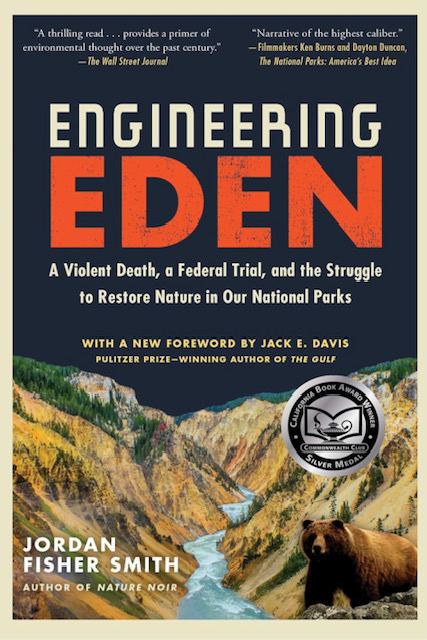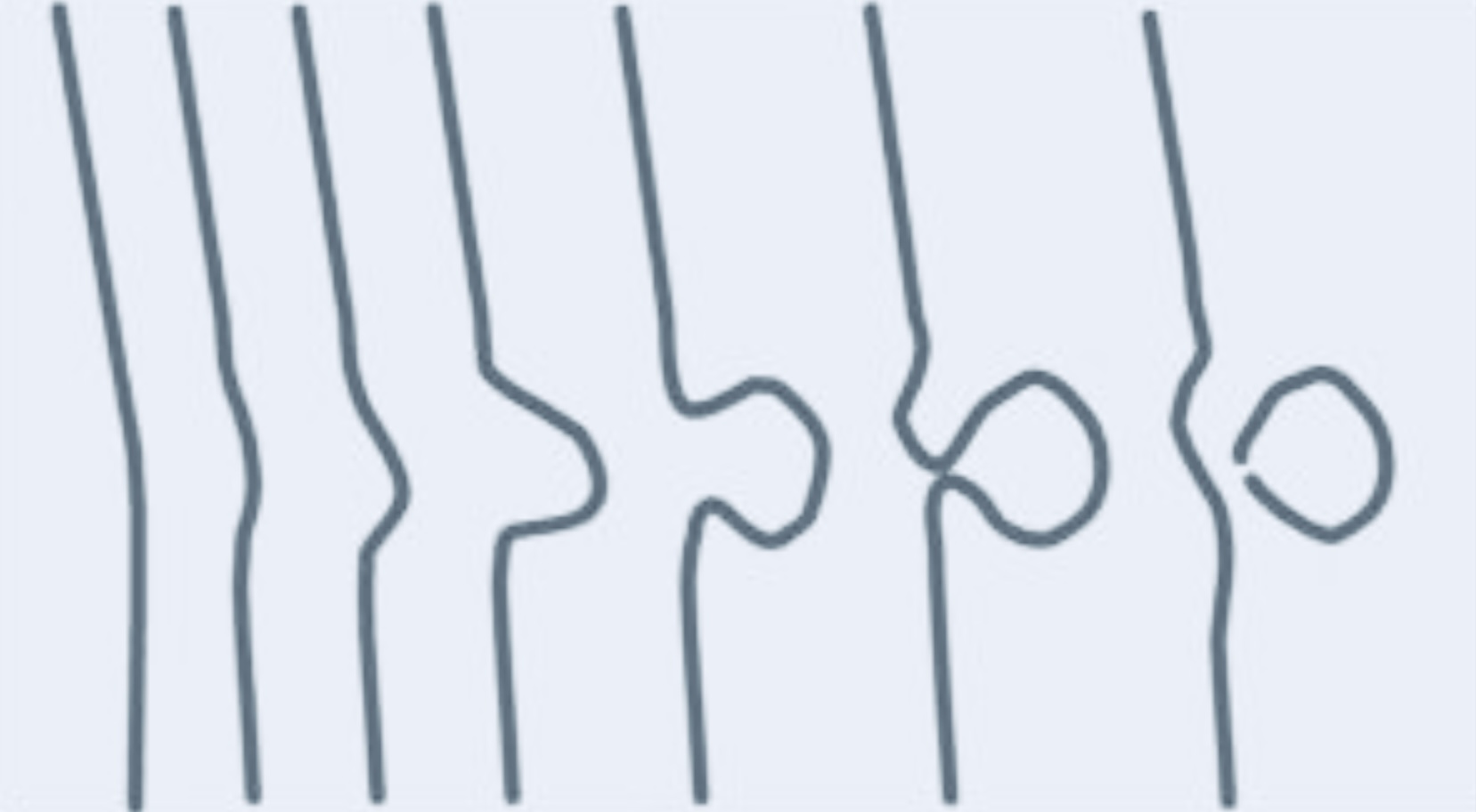A Few Good Books
(New Content Added to Page Over Time)
A Few Good Books
(New Content Added to Page Over Time)

MEANDER: Making Room for Rivers
by Margaret Wooster
In her book Meander, Margaret Wooster’s background as a Water Resource Planner helps explain how a small oxbow wetland on Buffalo Creek as regionally significant. In her words she tells “the story of what actually happened at this oxbow and what it became: a wildlife refuge surrounded by suburban sprawl; a reference site for restoring the lower Buffalo River; Exhibit A in the case against stream channelization; and an anomaly in being a place that is both full of life and a death trap. “
The title of the book relates to the degree to which a stream can provide ecosystem services based on how much the path it takes meanders as it moves from point A to point B downstream. Some ecosystem services include slowing flood waters by buffering their sediment scouring forces, as well as refilling groundwater aquifers, and filtering pollutants. These services are desperately needed in today’s world of increasing flooding, drought, & impervious surfaces that cause increased water runoff. Wooster shows that the consequences for not allowing enough room for water to meander lead to bigger problems in our developed spaces & in water quality.

MEANDER: Making Room for Rivers
by Margaret Wooster
In her book Meander, Margaret Wooster’s background as a Water Resource Planner helps explain how a small oxbow wetland on Buffalo Creek as regionally significant. In her words she tells “the story of what actually happened at this oxbow and what it became: a wildlife refuge surrounded by suburban sprawl; a reference site for restoring the lower Buffalo River; Exhibit A in the case against stream channelization; and an anomaly in being a place that is both full of life and a death trap. “
The title of the book relates to the degree to which a stream can provide ecosystem services based on how much the path it takes meanders as it moves from point A to point B downstream. Some ecosystem services include slowing flood waters by buffering their sediment scouring forces, as well as refilling groundwater aquifers, and filtering pollutants. These services are desperately needed in today’s world of increasing flooding, drought, & impervious surfaces that cause increased water runoff. Wooster shows that the consequences for not allowing enough room for water to meander lead to bigger problems in our developed spaces & in water quality.

MEANDER: Making Room for Rivers
by Margaret Wooster
In her book Meander, Margaret Wooster’s background as a Water Resource Planner helps explain how a small oxbow wetland on Buffalo Creek as regionally significant. In her words she tells “the story of what actually happened at this oxbow and what it became: a wildlife refuge surrounded by suburban sprawl; a reference site for restoring the lower Buffalo River; Exhibit A in the case against stream channelization; and an anomaly in being a place that is both full of life and a death trap. “
The title of the book relates to the degree to which a stream can provide ecosystem services based on how much the path it takes meanders as it moves from point A to point B downstream. Some ecosystem services include slowing flood waters by buffering their sediment scouring forces, as well as refilling groundwater aquifers, and filtering pollutants. These services are desperately needed in today’s world of increasing flooding, drought, & impervious surfaces that cause increased water runoff. Wooster shows that the consequences for not allowing enough room for water to meander lead to bigger problems in our developed spaces & in water quality.

NATURE’S BEST HOPE: A New Approach to Conservation That Starts in Your Yard
by Douglas W. Tallamy
” If I were able to give my 10 year old self one piece of advice about conservation, what would it be? … I would tell my young self to not only think about preserving pristine habitats, but also consider returning nature to the many places from which we have expelled Her.“
Tallamy is a professor at the University of Delaware in the Department of Entomology & Wildlife Ecology and author of more than 95 research papers. Nature’s Best Hope discusses how native plants that evolved specific relationships with insects support far more species than the non-native plants commonly sold at nurseries & that have been introduced in the environment surrounding our living spaces. National Parks & preserve lands that contain much of our wildlife may not be enough habitat to ensure that populations continue into the future. Tallamy proposes that we take a grassroots approach to conservation & help wildlife populations in decline by replacing many of the non-native plants in our own yards with native species.

NATURE’S BEST HOPE: A New Approach to Conservation That Starts in Your Yard
by Douglas W. Tallamy
” If I were able to give my 10 year old self one piece of advice about conservation, what would it be? … I would tell my young self to not only think about preserving pristine habitats, but also consider returning nature to the many places from which we have expelled Her.“
Tallamy is a professor at the University of Delaware in the Department of Entomology & Wildlife Ecology and author of more than 95 research papers. Nature’s Best Hope discusses how native plants that evolved specific relationships with insects support far more species than the non-native plants we so commonly sold at nurseries & that have been introduced in the environment surrounding our living spaces. Tallamy proposes that we can help wildlife populations in decline by replacing many of the non-native plants in our own yards with native species.

NATURE’S BEST HOPE: A New Approach to Conservation That Starts in Your Yard
by Douglas W. Tallamy
” If I were able to give my 10 year old self one piece of advice about conservation, what would it be? … I would tell my young self to not only think about preserving pristine habitats, but also consider returning nature to the many places from which we have expelled Her.“
Tallamy is a professor at the University of Delaware in the Department of Entomology & Wildlife Ecology and author of more than 95 research papers. Nature’s Best Hope discusses how native plants that evolved specific relationships with insects support far more species than the non-native plants we so commonly sold at nurseries & that have been introduced in the environment surrounding our living spaces. Tallamy proposes that we can help wildlife populations in decline by replacing many of the non-native plants in our own yards with native species.
THE COLD CANYON FIRE JOURNALS: Green Shoots and Silver Linings in the Ashes
by Robin Lee Carlson
What happens after wildfire moves through a landscape? — What life returns & what is lost?
Observations are key in understanding a dynamic ecosystem & help in predicting the changes that may occur over time. Robin’s book is the culmination of five years exploring the legacy of the wildfires that have twice burned Stebbins Cold Canyon Reserve. This is a story of fire as a source of transformation & renewal, rewriting wildfire as an elemental power that does not destroy the diverse habitats of California but nourishes them. With fire suppression and climate change undermining the regenerative work of wildfire, this story of ecological kinship is an urgent one, showing us how cultivating intimacy with our natural world teaches us what we need to do to sustain it.
THE COLD CANYON FIRE JOURNALS: Green Shoots and Silver Linings in the Ashes
by Robin Lee Carlson
What happens after wildfire moves through a landscape? — What life returns & what is lost?
Observations are key in understanding a dynamic ecosystem & help in predicting the changes that may occur over time. Robin’s book is the culmination of five years exploring the legacy of the wildfires that have twice burned Stebbins Cold Canyon Reserve. This is a story of fire as a source of transformation & renewal, rewriting wildfire as an elemental power that does not destroy the diverse habitats of California but nourishes them. With fire suppression and climate change undermining the regenerative work of wildfire, this story of ecological kinship is an urgent one, showing us how cultivating intimacy with our natural world teaches us what we need to do to sustain it.
THE COLD CANYON FIRE JOURNALS: Green Shoots and Silver Linings in the Ashes
by Robin Lee Carlson
What happens after wildfire moves through a landscape? — What life returns & what is lost?
Observations are key in understanding a dynamic ecosystem & help in predicting the changes that may occur over time. Robin’s book is the culmination of five years exploring the legacy of the wildfires that have twice burned Stebbins Cold Canyon Reserve. This is a story of fire as a source of transformation & renewal, rewriting wildfire as an elemental power that does not destroy the diverse habitats of California but nourishes them. With fire suppression and climate change undermining the regenerative work of wildfire, this story of ecological kinship is an urgent one, showing us how cultivating intimacy with our natural world teaches us what we need to do to sustain it.

ENGINEERING EDEN: A Violent Death, a Federal Trial, & the Struggle to Restore Nature in Our National Parks
by Jordan Fisher Smith
In the summer of 1972 Harry Eugene Walker hitchhiked away from his Alabama home to see America. Nineteen days later he was killed and partially eaten by an endangered grizzly bear at Yellowstone National Park. An environmental activist convinced Harry’s parents—simple dairy farmers who’d never as much as contested a traffic ticket—to sue the Department of Interior for alleged mismanagement of the grizzly that not only caused their son’s death, but threatened to drive the great bear to extinction in the 48 contiguous United States. When the case went to trial in 1975, two of the greatest wildlife biologists of the twentieth century testified against each other in what became a referendum on some of the most fundamental issues we face today in conserving wild places: When nature has been disrupted by human beings, how do we go about repairing it? How much should we try to control or manipulate it in order to heal it? And, what happens when we get it wrong?

ENGINEERING EDEN: A Violent Death, a Federal Trial, & the Struggle to Restore Nature in Our National Parks
by Jordan Fisher Smith
In the summer of 1972 Harry Eugene Walker hitchhiked away from his Alabama home to see America. Nineteen days later he was killed and partially eaten by an endangered grizzly bear at Yellowstone National Park. An environmental activist convinced Harry’s parents—simple dairy farmers who’d never as much as contested a traffic ticket—to sue the Department of Interior for alleged mismanagement of the grizzly that not only caused their son’s death, but threatened to drive the great bear to extinction in the 48 contiguous United States. When the case went to trial in 1975, two of the greatest wildlife biologists of the twentieth century testified against each other in what became a referendum on some of the most fundamental issues we face today in conserving wild places: When nature has been disrupted by human beings, how do we go about repairing it? How much should we try to control or manipulate it in order to heal it? And, what happens when we get it wrong?

ENGINEERING EDEN: A Violent Death, a Federal Trial, & the Struggle to Restore Nature in Our National Parks
by Jordan Fisher Smith
In the summer of 1972 Harry Eugene Walker hitchhiked away from his Alabama home to see America. Nineteen days later he was killed and partially eaten by an endangered grizzly bear at Yellowstone National Park. An environmental activist convinced Harry’s parents—simple dairy farmers who’d never as much as contested a traffic ticket—to sue the Department of Interior for alleged mismanagement of the grizzly that not only caused their son’s death, but threatened to drive the great bear to extinction in the 48 contiguous United States. When the case went to trial in 1975, two of the greatest wildlife biologists of the twentieth century testified against each other in what became a referendum on some of the most fundamental issues we face today in conserving wild places: When nature has been disrupted by human beings, how do we go about repairing it? How much should we try to control or manipulate it in order to heal it? And, what happens when we get it wrong?

